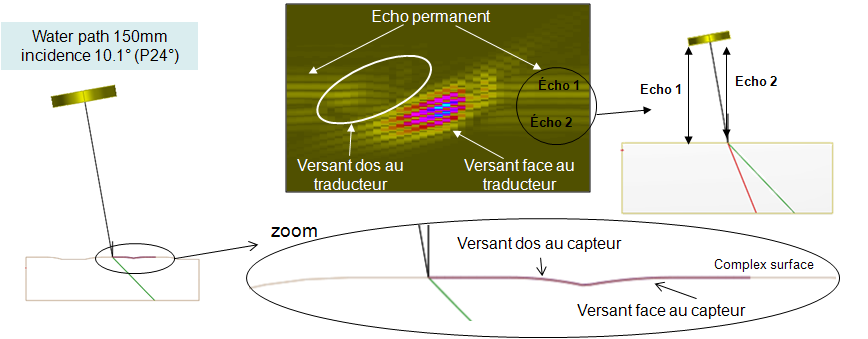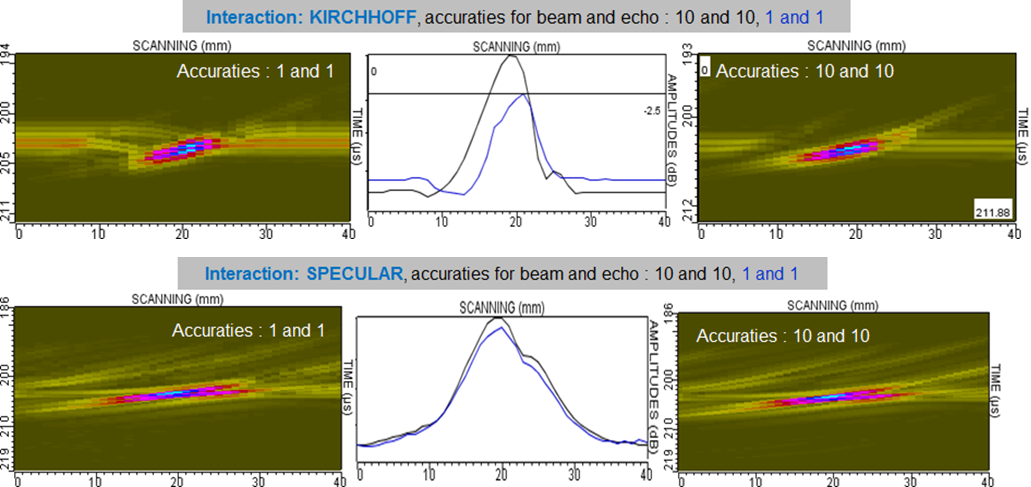UT – Surface Echoes: Weld bead surface type
In this study, the calculation accuracy influence for both CIVA models is evaluated. The surface echo of a « weld bead » is measured with a probe in immersion, focused with a 108 mm ray lens, presenting the following characteristics:
| Ø Crystal (mm) | Mode | Frequency (MHz) | Bandwith (%) | Phase (°) |
|---|---|---|---|---|
| 60 (focalized) | L0° | 1 | 41 | 0 |
The inspected specimen and a measured Bscan from J. Nadal PhD (« simulation d’un contrôle par ultrasons focalisés d’une pièce d’acier revêtue », 1996), are presented here below:
Simulations have been carried out with both CIVA models, and for each model two accuracy sets are applied, 1 and 1, then 10 and 10.
In the case of Kirchhoff model, a difference is observed on Bscans corresponding to different accuracy sets. This results in a discrepancy of 2.5 dB on Ascan amplitudes comparing both precisions. Moreover, even with a high precision, all contributions observed in the experimental Bscans are not visible in the surface echo simulated Bscan, particularly the splitting of the flat part.
The specular model is not sensitive to changes in accuracy. On the other hand, the simulated Bscan is considerably different from the experimental Bscan. That can be explained by the fact that the specular model does not take into account diffraction phenomenon, which constitutes a limitation of this model.
Back to surface echoes
Back to geometrical echoes


